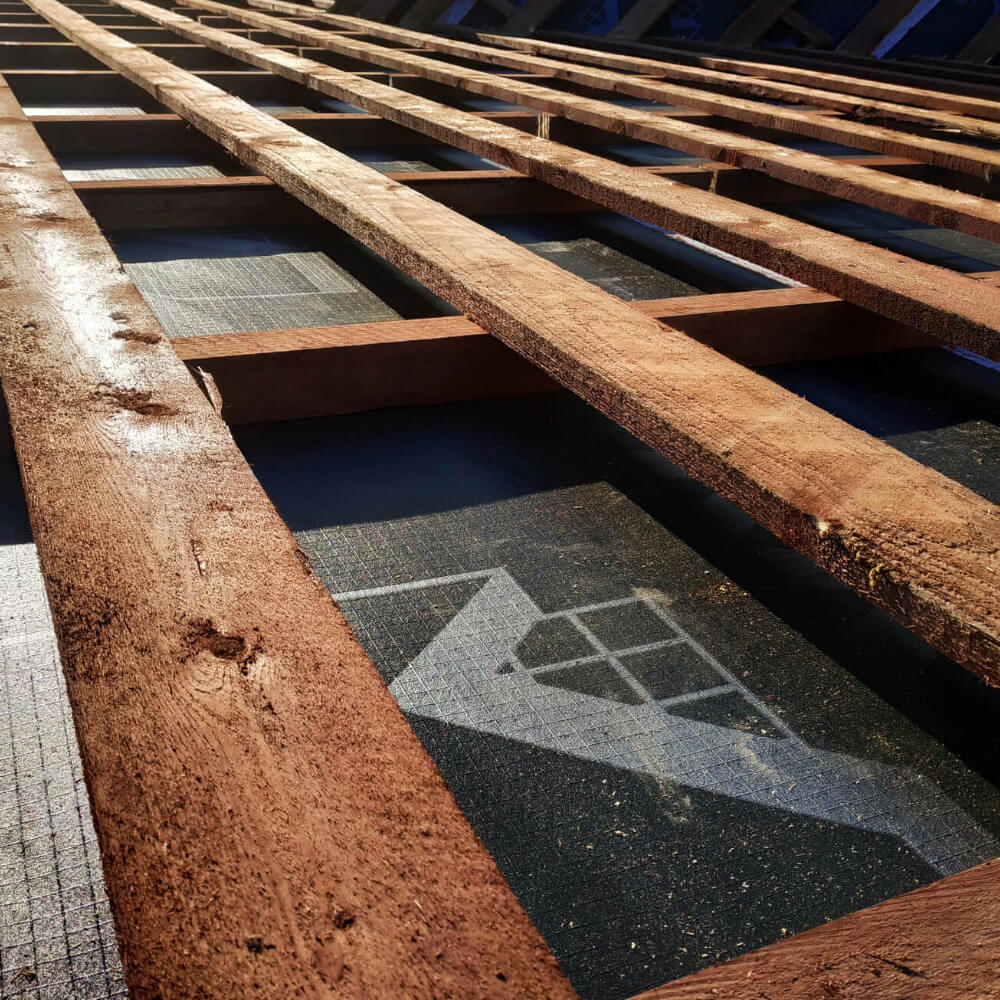

How to Choose Roofing Underlayment
Do you know how to choose roofing underlayment? Read on to learn what you need to know to choose the right underlayment for your home.

Did you know that roofing underlayment can protect your home against wind and insect damage? Roofing underlayment is a vital component of any roof system. It serves to protect the roof deck, provide support for the weight of the building materials, and insulate against heat and cold.
With so many options available, choosing roofing underlayment that is right for you can be difficult. Read on to learn how to choose roofing underlayment for your home.
What Is an Underlayment?
Underlayment is a layer of material that covers a roof before you put on shingles or roof tiles. Many types are available, including fiberglass mesh, felt paper, natural rubber, and synthetic rubber underlayment. Where you live and what type of roofing system you use will determine the type of underlayment to choose.
There are two primary goals with an underlayment:
Protect Your Roof From Water Damage and Mold Growth
A quality underlayment will keep moisture out of your roof and prevent leakage. It’ll also protect it against fungi, insects, and wood rot caused by exposure to water.
Provide a Solid Base for Asphalt Shingles or Metal Roofs
Underlayment sits between your home’s exterior walls and the shingles. It supports the weight of the roof covering and disperses it evenly throughout the structure. Thus, providing increased protection against leaks and structural damage.
How Does an Underlayment Work?
An underlayment raises the tiles off of the roof deck and provides a space for water runoff. When installed, it keeps your shingles lifted away from the sheathing of your home. This keeps them dry and free to move, expand and contract with seasonal temperature changes.
The underlayments we use at McCoy Roofing are durable and prevent damage from insects, wood rot, fungi, and algae growth. They also offer abrasion resistance in high wind regions, load-bearing capacities of up to 50 lbs., and tear resistance.
They also have fire-resistance ratings of up to three hours.
Types of Underlayment
Please note, we have different types of underlayment depending on the material used and the method of construction. These qualities affect their durability. Here at McCoy Roofing, we handle three different kinds:
Felt
Roofing felt is made from natural fibers, including cotton, jute, or other cellulose-based materials. It’s comparable to paper towels that you would use around the house. It’s light, strong, absorbent, and resistant to ultraviolet light.
Felt is considered the most efficient underlayment in terms of fire protection and energy efficiency. Remember, it can withstand high temperatures without breaking down or melting.
Synthetic
This material offers several advantages over felt, including being flexible enough to support heavy loads. It’s light enough for easy handling when installing and durable enough to remain effective even during extended periods. Moreover, it doesn’t get stiff or hard.
Synthetics are also waterproof and insect-proof, unlike natural fibers like wool or cotton, which absorb water quickly, exposing them to fungal growth. It’s not adversely affected by moisture content either, eliminating the risk for damage because of termite infestation.
Rubberized
This variation of felt is lighter, stronger, and more durable than the other choices you have. Compared to naturally-derived materials like cotton or jute, rubberized underlayment is more resistant to bacterial growth.
It’s also easier to install. It doesn’t stretch with ease like felt, requiring special equipment when rolling out onto your roof deck.
Rubberized underlayment uses a polymer blend for its coating material.
There are some disadvantages to this type, though. It’s not as effective against wind-driven rain because it’s not impervious. Additionally, there’s a possibility for a reduction in your roof’s ability to shed water when compared to felt.
Why You Should Check Fire-Resistance Ratings of Underlayment
Underlayment comes with different fire-resistance ratings. The NRCA recommends you go with a material that can withstand temperatures ranging from 300 to 500 degrees Fahrenheit for no longer than three hours.
If you live in a cold climate, such as the Northeast or Canada, choose an underlayment with a Class A fire rating. It’ll prevent sparks from your chimney from igniting any roofing materials. Also, it can protect the building against prolonged heat exposure and fire spread.
If you live in a warmer climate, but plan on using hot asphalt shingles, then choose an underlayment with a Class B fire rating; these are made to keep embers off the roof and provide some protection from high-temperature fires.
Find out what type of tiles were used for installation for tile roofs and get an underlayment explicitly designed for those tiles.
Always check the fire-resistance rating of your tiles before installing underlayment.
Choosing the Right Underlayment for Your Roof
If you’re shopping online, check what type of material is used for the underlayment you’re buying. You should also note that most suppliers don’t list fire resistance ratings unless you specifically ask them for more information.
Visit a local store where you can pick up samples and do some testing on your own with a lighter and heat source. This will give you the best indication of how easy it’ll be to handle while working on site.
If there are no local suppliers in your area, we can help you find them and install them at affordable rates.
Match your underlayment material with the type of roof that you have. For example, if you have an asphalt shingle roof, it makes sense to choose a felt underlayment because they’re compatible materials.
Try to avoid mixing materials, though. This can cause future problems with the roof’s waterproofing covering. It’s not something that will happen immediately, but it could create issues later on down the road.
Additional Roofing Underlayment Tips
Before buying and installing underlayment, you should consider the following:
- What type of roofing system will you use?
- Will you be working in a coastal climate or one where fire is common?
- Is the underlayment for a tile roof or an asphalt shingle roof?
- Make sure your sizing matches the width of your tiles.
- Are there any moisture issues related to this project?
Check with your residential roofing contractor to see if you need underlayment for your roof. They’ll give you suitable options.
Now that You Know How to Choose Roofing Underlayment, What Next?
Are you building a new home or want to replace your roof with durable roofing underlayment? Using our roofing underlayment guide, you’ll not only learn how to choose roofing underlayment, but also learn its substantial benefits.
At McCoy Roofing, we are experts in installing the best roof underlayment at affordable prices in the most efficient timeframe. Call us today at 402-616-7304 to get started and enjoy a free roof inspection.